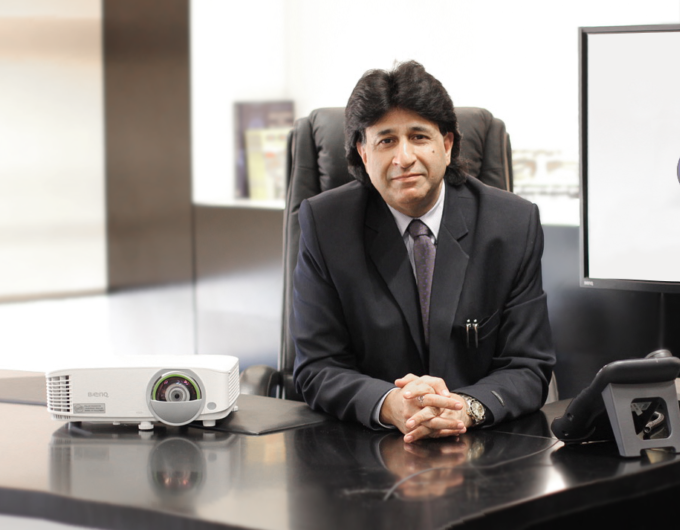Manish Bakshi, Managing Director at BenQ Middle East, discusses how smart interactive projectors can actively engage students in fostering collaborative learning practices
The pandemic has resulted in numerous changes in classrooms globally. With blended learning here to stay, it’s critical for educators to have the technological tools in place to keep up with the constantly changing learning environments.
The 21st century classroom is a powerful instrument that may assist educators in achieving their goals of enhanced student learning and collaboration.
These next generation learning spaces are intended to be adaptable and highly compatible with a wide range of learning models and techniques, including personalised learning, flipped teaching and gamification.
The lack of a competent, collaborative tool that can facilitate students to work together seamlessly is a significant challenge for many teaching professionals. An inadequacy of simplified storage tools to accumulate teaching material and student data in a streamlined manner and at a singular place is another issue faced by a majority of teachers. Many educators also feel a growing requirement for advanced file-sharing tools and capabilities so that multiple students can work on projects simultaneously. Hence, a collaborative classroom. It is designed to put all these issues to rest for good and elevate the quality of teaching and learning outcomes.
Collaborative learning approach
Collaborative learning environments are intended to be adaptable and compatible with a wide range of educational techniques, including personalized learning, flipped teaching, and gamification. To this extent, an edtech element that supports most needs of collaborative classrooms today is the smart projector system. This visual learning tool takes learning to the next level.
Smart projectors make every lesson substantially more impactful, with better use of time. It also increases constructive collaboration and prioritises student learning in every activity.
With visual aids, students get more actively involved in the learning process, which helps to enhance their critical thinking abilities and improve classroom results on a regular basis. Furthermore, keeping track of data and analysing it assists instructors in identifying students’ weak spots so that they can focus on them accordingly.
In fact, the smart project has emerged as one of the most important teaching tools in post-pandemic classrooms. With simplified access to useful apps such as video conferencing and others, it has been beneficial to both remote and in-person classes as it helps students learn in a fun and interactive way.
Why smart interactive projectors?
A smart projector’s multiple capabilities allow teachers and students to focus more on what is important and reduce time leaks caused by disruptions in collaboration and smooth functioning (IT).
Interactive projection systems are transforming teaching-learning processes dramatically, and students are encouraged to workollaboratively, reach solutions through the application of knowledge , and be confident in sharing their ideas.
Studies suggest that smart interactive classrooms encourage students to attempt solving problems independently as well as together using collaborative learning tools. Projectors also allow everyone in the classroom to get a clear, unbiased view of what is being presented and taught by the teacher – this is a great driver in augmenting learning outcomes through in-class engagement.
Moreover, projectors allow teachers to prepare lesson plans in advance and present seamlessly by simply plugging and playing. These are the type of solutions that make blended learning truly possible by integrating the BYOD concept wherein learning material can be accessed from individual personal devices seamlessly. This has proven to be advantageous during the pandemic when a number of students were not attending school and learning from home.
Teachers making optimum use of a smart classroom have observed an evident difference as they now host highly interactive, convenient, collaborative, and future-relevant lessons while students can imbibe and understand so much more during school hours.








